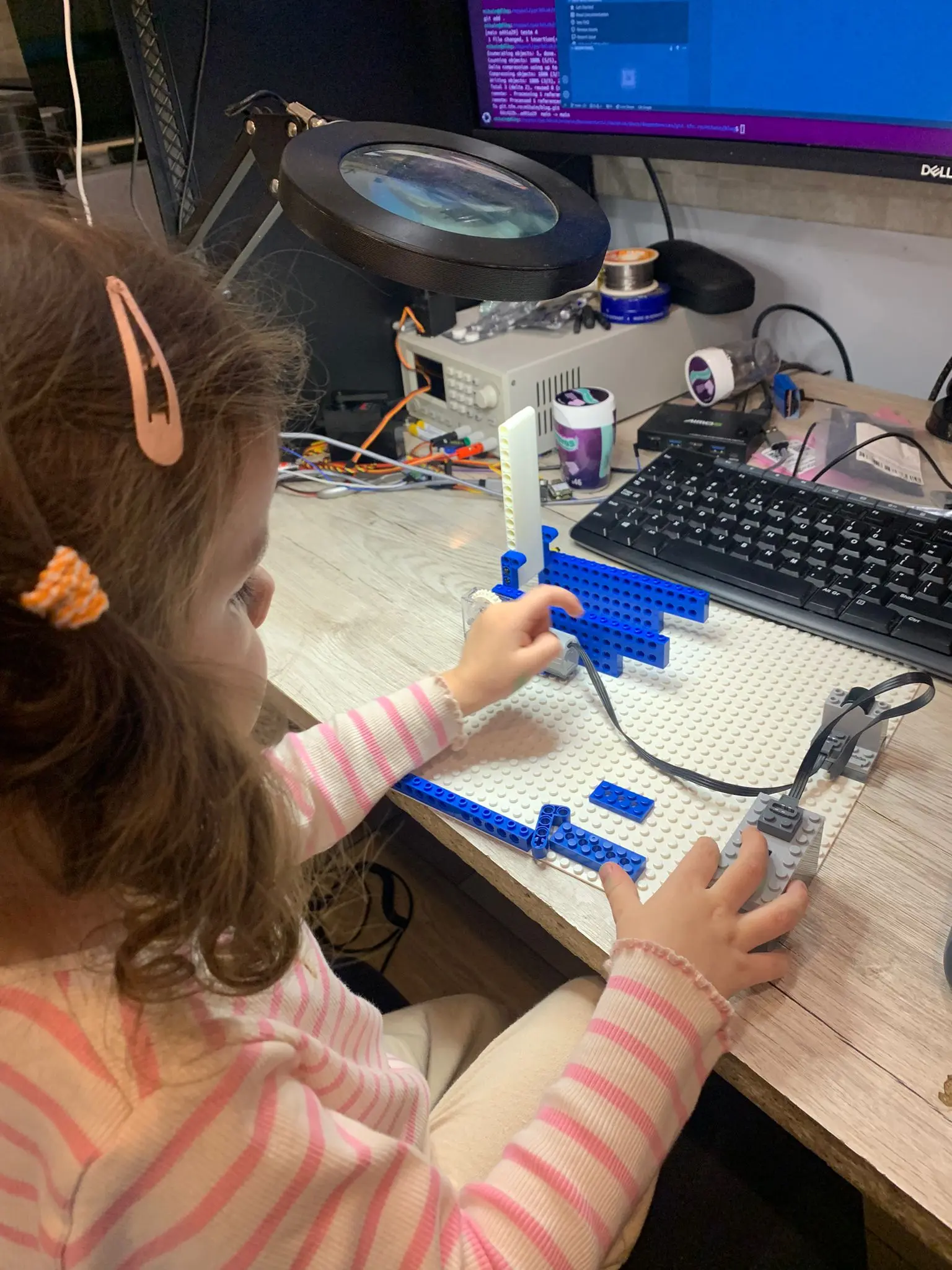17. January 2025
Simple things are good

Sometime the best way to explain things is to have the simplest possible example. However this example must still be interesting and anchored in what “client” wants or is interested in. Let’s take this example.
My daughter is learning how to raise / lower a lego bridge. She is facinated by the fact that when the bridge is up a boat can pass and when is lowered a car can go over the bridge. She was building her versions of the bridge with Duplo’s (imho she is still too young to play with normal lego unsupervised). So when we play with normal lego we do it toghether. Back to the point . The simplest way i thought was a simple bridge with a IR receiver + batery + motor + mechanical parts and a IR remote to raise / lower the actual bridge.
What i didn’t expect was that she absolutely loves it, puts it in all sorts of edge cases and learns what happens ( what happens if there is a car on the bridge and she raises the bridge, what happens if the bridge retracts too much and so on) and repeats the “procedures” to see if they are consistent.
Lesson learned from this is the importance on building not of an MVP but building the right MVP.
If the client does not resonate with the MVP you wasted your time. If the client starts to tweak, use, modify, improve and play with the MVP that’s a big win and you have a strong foundation to build upon.